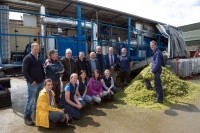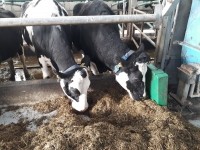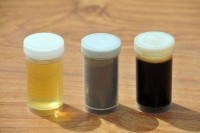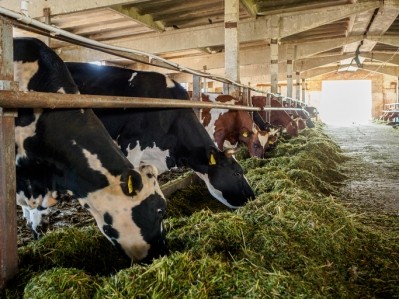Feed protein from grass: Do green biorefineries have a future in Ireland?
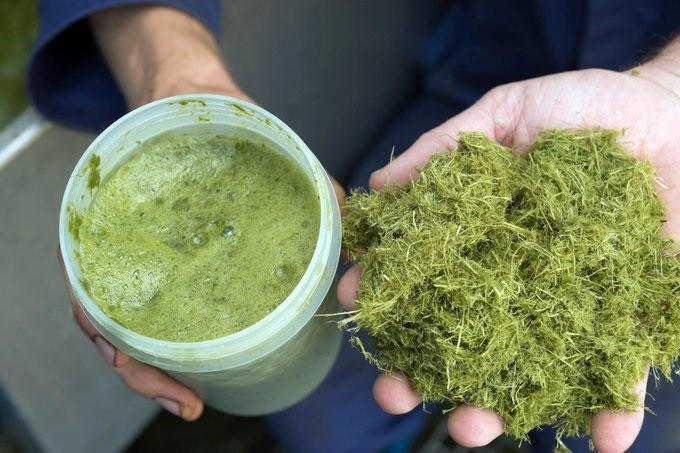
The goal of the Irish Department of Agriculture initiative, funded by the EU innovation partnership EIP-Agri, was to demonstrate the use of small-scale biorefineries to convert freshly harvested grass into a range of high value products; it was born out of the idea of establishing a bottom up, multi-actor approach to addressing challenges in the Irish agricultural sector, combining consortia which include farmers as well as researchers to tackle issues.
Grass grows well in Ireland, the only country in Europe with over 50% of grassland, so it makes sense to leverage that in the bioeconomy.
The grass value-add project, called Biorefinery Glas, involved the Institute of Technology Tralee, now part of the Munster Technological University (MTU), teaming up with University College Dublin (UCD) on dairy cattle trials, partnering with the Carbery Co-op to test the biorefineries on farms and working with Barryroe Co-op to test one of the co-products in pigs. Wageningen University-spinout, GRASSA, provided the biorefining technology.
Overall, the project has been successful, James Gaffey, MTU researcher and project coordinator, told FeedNavigator. “We went from demonstration to testing of products to development of the business model within two years.”
Fortunately the demonstration and the production elements were completed prior to the start of the COVID-19 pandemic, he said.
Findings
Using the grass biorefinery, the team produced a press cake, a fiber fraction containing part of the protein in grass; they said it was able to replace silage in dairy cow diets without impacting the milk yield and quality negatively, and also supported significant reductions in nitrogen (N) and phosphorus (P) losses in excrement, significant improvement in N-use efficiency, along with the potential to reduce rumen methane emissions.
“We did not go for 100% replacement, we went for two thirds substitution, so 66% of silage in lactating dairy cow diets was replaced with this press cake. Because we press protein during the production phase, the biorefinery process, we end up with a much higher dry matter material – about 40% DM – but we also end up with a product that is lower in protein – with it containing about 10% CP as opposed to 16% CP level in silage. So we trialed that in dairy cows over 77 days - it was quite a comprehensive trial – 15 cows in each batch on each diet.
“And what we found was there was no significant negative impact on milk quality or milk yield compared to silage.
“We also saw that much more of the nitrogen was ending up in the milk than in the excrement,” said Gaffey.
That nitrogen use efficiency data mirrored the findings of a trial undertaken in Denmark, though the Danish study evaluated clover grass and the Irish research was based on perennial ryegrass.
Gaffey said the team also carried out in vitro analysis on the potential impact of the press cake on rumen methane emissions. “We found that in the 66% replacement rate we got a 15% reduction in methane emissions in the trial diet compared to the control one.”
In terms of the improved nitrogen efficiency seen in the trial diet, he said the team estimates that the pressing process makes the nutrients and protein more accessible for the cow. “But we also think that the press cake comprises a higher percentage of resistant protein, rumen by-pass protein, so it is being more effectively utilized by the cow and it may be possible that is having an impact on the emissions as well. It would require further research to investigate that,” said Gaffey.
Pig feed trial
A grass protein concentrate was also manufactured and tested in pig feed rations.
“The grass protein concentrate comprised 35% CP. It is essentially the part of the protein that was not included in the press cake, separated out and dried.”
A pig feed trial was conducted with the Barryroe Co-op, a supplier of animal nutrition products and pig feed within the southwest region of Ireland. They incorporated the concentrate into a conventional diet for 54-day old weaners over a 31-day trial period, replacing 30% soybean meal and 30% barley. There were 55 pigs in each cohort.
“Initially, the pigs took about five or six days to adapt to the new diet. But once the animals did adapt, they [the Barryroe co-op team] started noticing that the pigs were eating a lot of the trial diet. By the mid-point of the trial, there was a higher daily intake of the trial diet compared to the control diet, there was also a higher daily weight gain. By the end of the trial, [both of those parameters] had increased again.”
The protein concentrate would likely be cost competitive with standard soybean meal. “It would be a direct replacement, so there would be no higher costs associated with using the ingredient."
Having an industry partner validate the protein concentrate was extremely positive, said Gaffey.
Another product arising out of the project was fructo-oligosaccharides, isolated from the deproteinized grass biorefinery stream and evaluated for their prebiotic potential.
“This product would be targeted mainly at pig feed but we are looking at applications in pet food as well. We have analyzed the fructo-oligosaccharides at lab scale, and, overall, we found comparable performance to on the market products in terms of prebiotic efficacy. These fructo-oligosaccharides will make a big difference to the overall business case of the grass biorefineries. They are a relatively low volume, but high value product.”
Finally, a residual biorefinery stream was evaluated as a substrate for biogas following extraction of the three products; again, the team noted the potential of this coproduct.
Next steps
The vision for these grass biorefineries is to make them small-scale rural enterprises. “The model that we are looking at in terms of replication is an 8 ton per hour biorefinery. That would be economically viable, based on analysis we have done. We see it as a small-scale, stationery model working on a local basis, potentially run within a co-operative with a supply chain of around 10km, requiring only about 2% of the grass in the area to feed that biorefinery.”
While more research is needed to scale up some aspects of the process, Gaffey believes there is enough positive indication both from the government and the farming sector that green biorefineries have a future in Ireland.
“If we look to Denmark as an example, it is a country where we are starting to see the establishment of medium to large scale demonstration plants that are focused on green biorefinery, and they have been supported by the Danish government and industry as a means of reducing the country’s dependency on soybean imports and creating local protein. I think what they are doing creates potentially a vision for what Ireland could do as well.”
